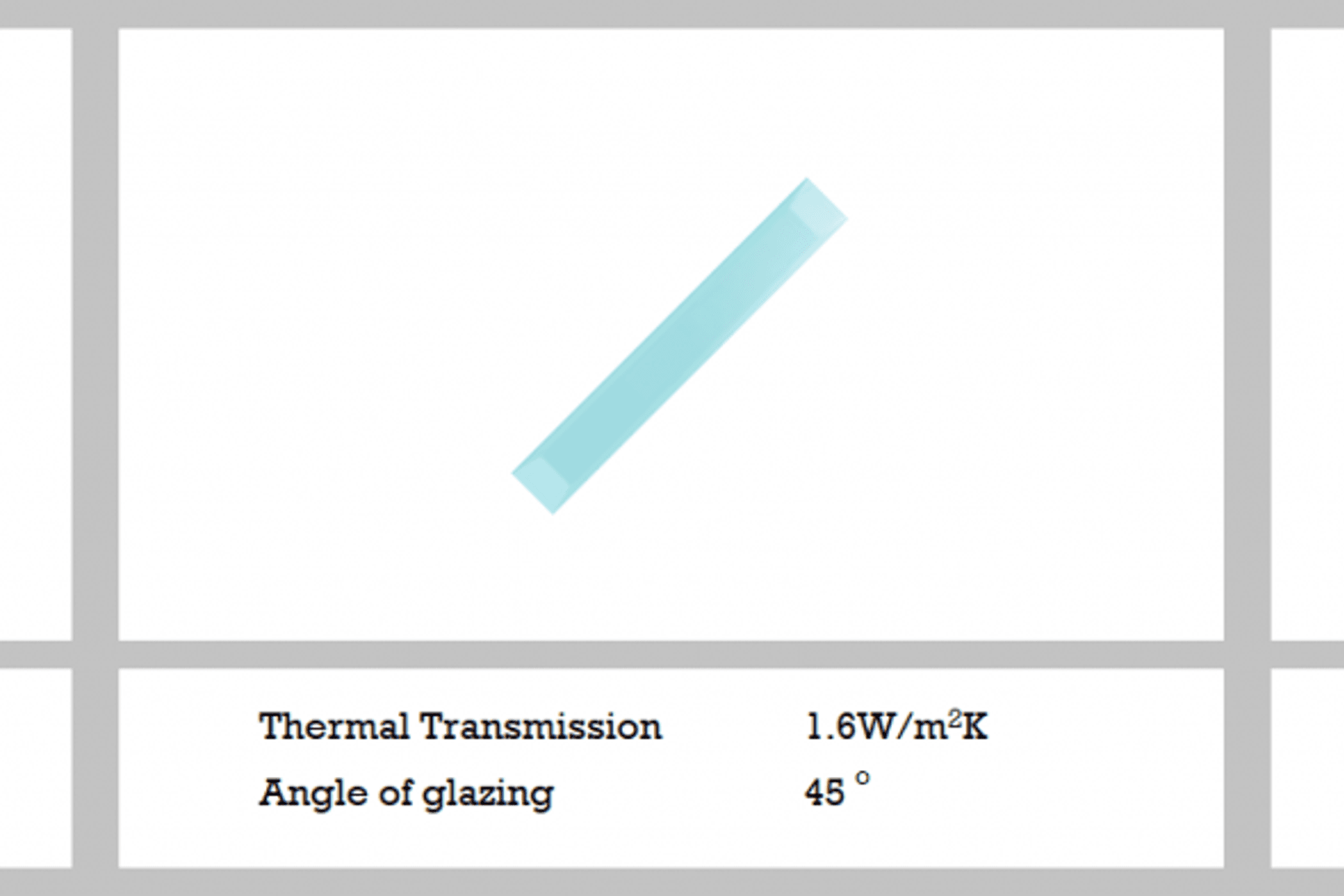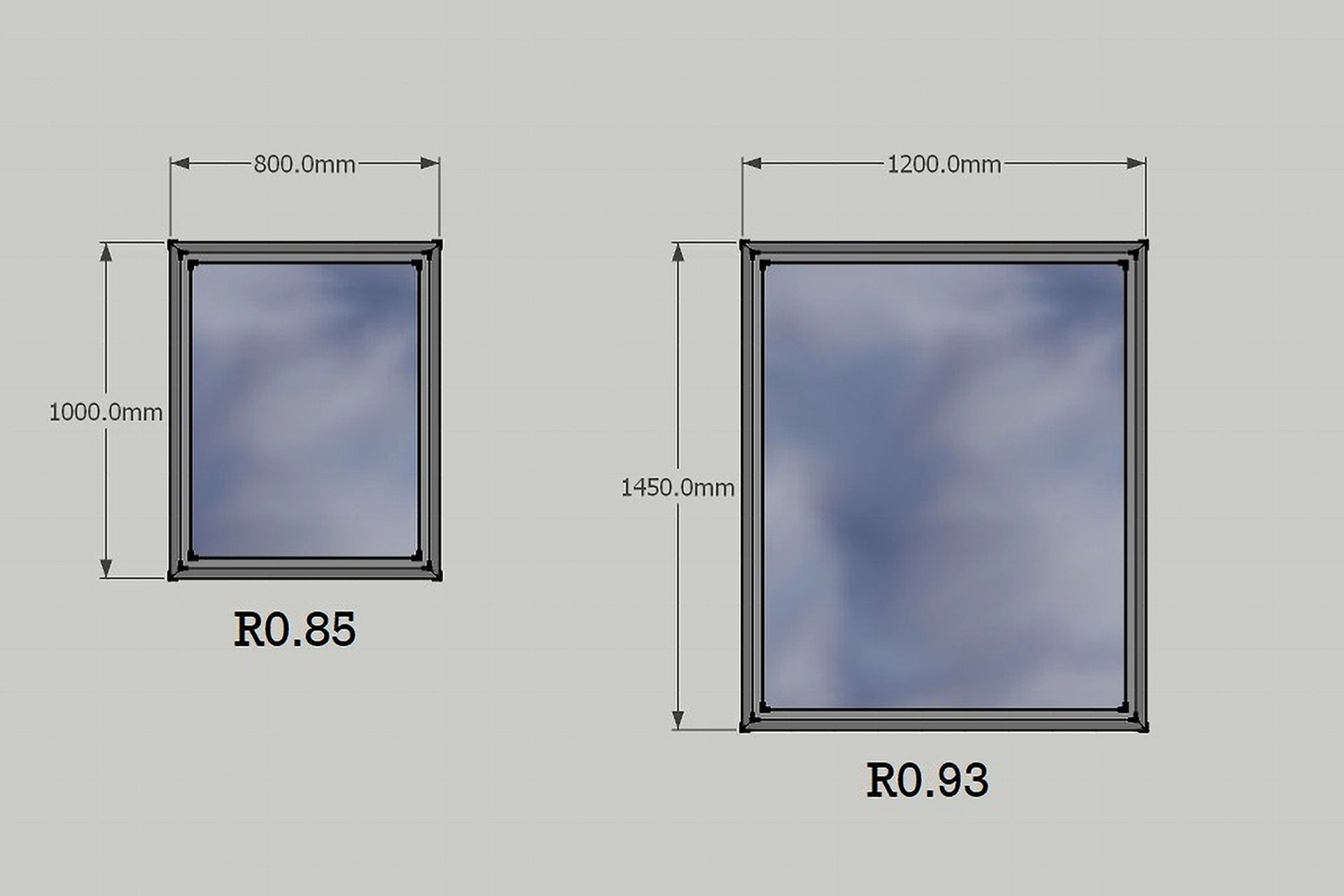It’s no longer business as usual for skylights

With the new H1/AS1 Calculation of the construction R-value of each individual skylight within the thermal envelope be determined as per E.2.1.2
The thermal transmittance (Uw) of a skylight shall be determined in accordance with ISO 10077-1, with:
- a) the thermal transmittance of the glazing (Ug) determined using BS EN 673, considering the effects of horizontal or angled glazing on the heat transfer; and
- b) the thermal transmittance of the frame (Uf) determined using ISO 10077-2.
There are now four critical parts that make up the construction R Value for every skylight
- The Glazing selection
- The Frame selection
- The installed pitch
- The size (frame to glass ratio)
The while most would understand the effect of the glazing and frame selection, the big change here is the new requirement for the consideration of the thermal transmittance of horizontal or angled glazing.
When we change the angle that the glass sits at, the thermal performance – and therefore the Ug value of the glass changes. This change in thermal performance is important to note as it will affect the overall Uw of any skylight. The change in the thermal performance of glass at tilted angles is due to the convection currents that occur inside all double or triple glazed units. When a glass unit is vertical, the gas filling between the glass panels heats from the internal temperature of the building, this gas filling then rises and the heat escapes to the external of the glass panel causing the gas to cool again and sink. This movement of the gas causes a current in the gas filling and aids heat loss to the external of the glass panel. When you tilt a glass unit the same thing happens, but the vortices occur a lot more frequently across the glass unit as the convection currents only travel vertically. This means you get more convection currents which aids heat loss to the external of the glass panel and the thermal performance of the glass reduces.
For instance, if the thermal performance of a double-glazed unit in a vertical position was 1.1W/m2K when this unit is tilted to horizontal (to be used as a skylight) the thermal performance will reduce quite dramatically to 1.8W/m2K. By the same measure a skylight installed at 45 degrees will have a different construction R-value to the same size skylight installed at 20 degrees.

The next important factor to consider is the window size (or aspect ratio) as this also has an impact on the construction R-value of a skylight as a building element. Normally the thermal resistances of the glazing and the frames are dissimilar. For large windows, the thermal resistance of the glazing will have more impact on the overall window construction R-value than in a small window, which is dominated by the frame performance. This means that the construction R-values of two differently sized windows consisting of identical frame and glazing materials will be different.

With the above in mind this therefore rules out the possibility of using a generic skylight R Value in compliance documentation and means each skylight will have to have its Construction R Value calculated separately.
This may all sound rather daunting as it differs from the way we have done things in the past, however Adlux are here to help. All you need to do is send your plans to sales@adlux.co.nz and provide us with is the following information and we will be able to produce a skylight construction report for your project.
– The overall size for each skylight
– The pitch of each
– Building Consent Number (if known)
– The project name or address
It is also important to note that whilst there is no minimum R Value requirement in H1/As1 for windows, doors or skylights unless the Scheduled Method is being used as the pathway for compliance, Adlux is working hard to bring you the best performance possible across our range of products.
